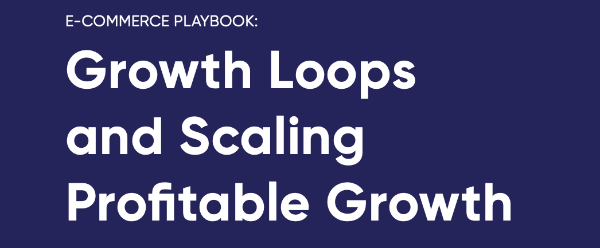Building growth loops in digital commerce: how to go in circles (the right way)
Viral growth is a wonderful thing, unfortunately in inverse proportion to its scarcity. But scalable growth loops helping you scale digital commerce are not pipe dreams, and while they benefit from virality, they are not dependent on them.
They do depend on scientific marketing. More than anything else, today is the age of the marketing scientist — in digital commerce and in mobile growth.
“As a scientist, the only thing I believe in is experimentation.”
Alok Gupta, former head of marketing science at Lyft
Marketing scientists use tools. They use data. But they are not defined by their tools or their data.
Instead, they are defined by their mindset. Marketing scientists operate as scientists. They:
- Form hypotheses
- Run experiments
- Measure results
- Optimize based on their source of truth: accurate ROI for every marketing activity
AI and automation certainly help, but this isn’t a process of setting it and forgetting it. There are always new channels, new creative, new ads, new offers, and new initiatives to test and optimize. And the cycle of experimenting, measuring, optimizing never ends.
That’s the growth loop, which is actually a series of concentric loops.
There’s an entry point: defining the growth stack that will deliver the results you need, but there’s no exit point. There’s a never-ending customer and/or user acquisition cycle, and there’s also a connected re-engagement cycle. Done right, running growth loop forms multiple ascending spirals of growth for digital commerce initiatives.
The digital commerce growth loop
- Acquisition
- Building creative
- Selecting partners
- Running campaigns
- Testing new partners
- Optimizing
- Re-engagement
- Defining audiences
- Messaging and/or retargeting
- Testing
- Measuring
- Optimizing
There’s no real exit point: do you ever want to stop growing, stop acquiring new customers, or stop re-engaging with existing customers? But there are way stops along the path: re-examining your tech stack and fine-tuning your strategy and data management.
And, of course, there’s more: , , , , brand, offers, , , and all the other typical must-do’s of running a . There’s and
But once you have the table stakes in order, it’s about scaling to drive demand. That’s for , using to guide your .
Ultimately, the goal is building a scientific growth engine, something that Eric Seufert, former head of at Singular N3TWORK, calls “printing money.”
Get the full report
The full and free report — no, you don’t even need to log in or give us your email address — is available instantly right here.
In it, you’ll find case studies and examples from clients who have seen abnormal success rates by creating growth loops for . Clients who have achieved impressive and who understand the like:
- Nexon
- Lyft
- N3twork
- iProspect
- and more …
You’ll also get insights on:
- ad creation
- multilingual language optimization
- split tests
- lift studies
- aggregated ROI
- creative optimization
- performance optimization
- fraud detection
- budget optimization
- user-generated content
- and more …
Success in digital commerce is hard. There’s competition, complexity, and far too many choices to make. We’ve seen how the best in the business succeed: here’s your peek.

Stay up to date on the latest happenings in digital marketing


